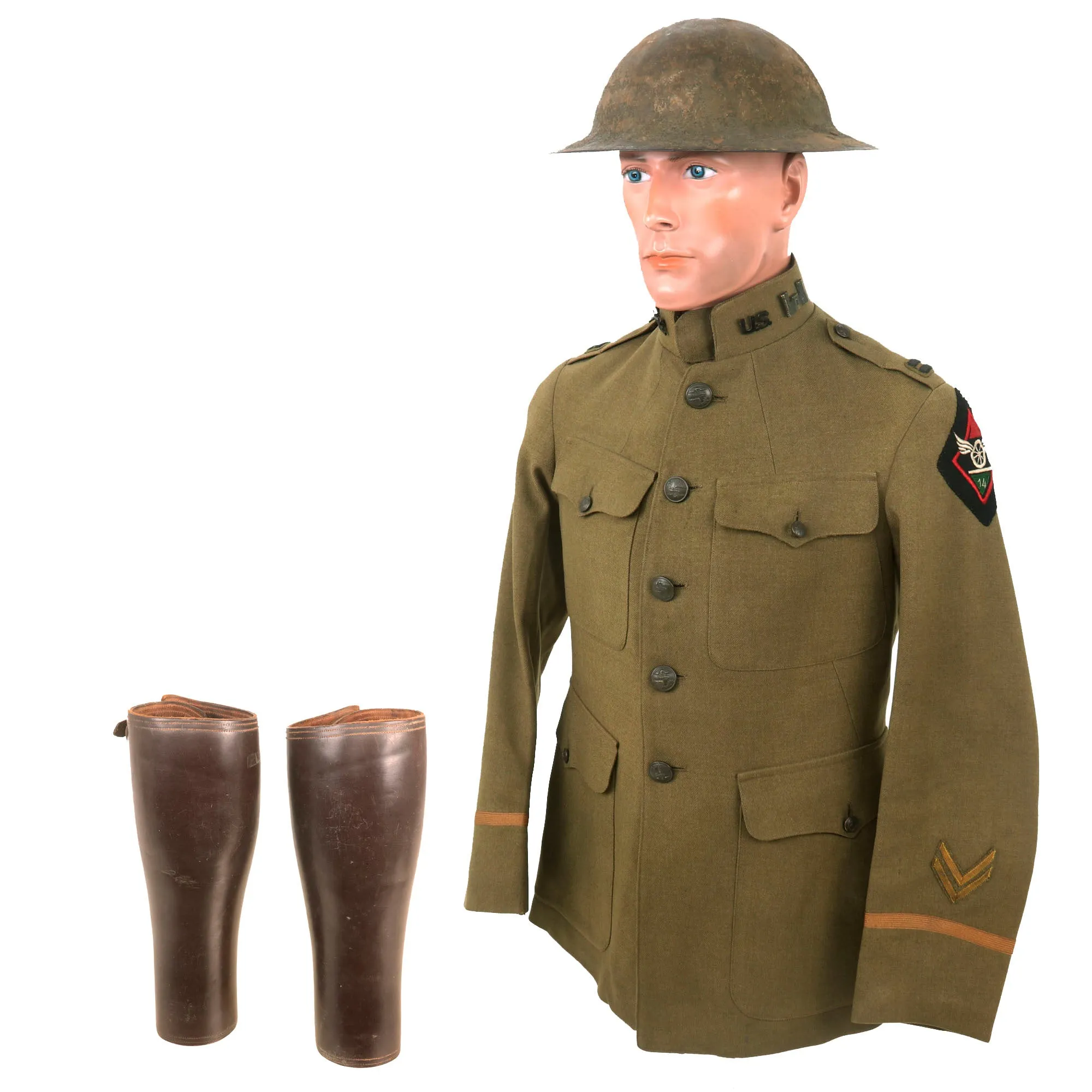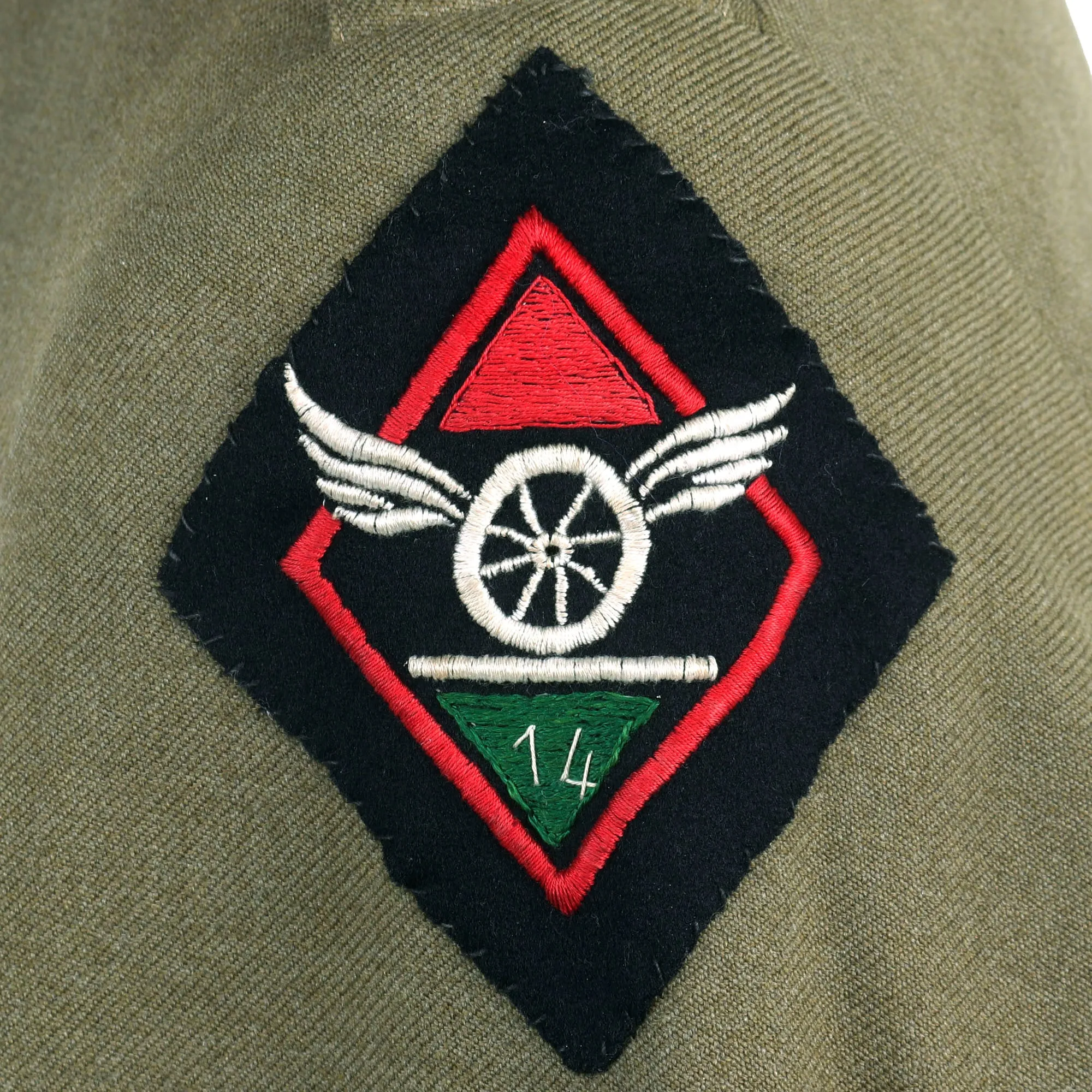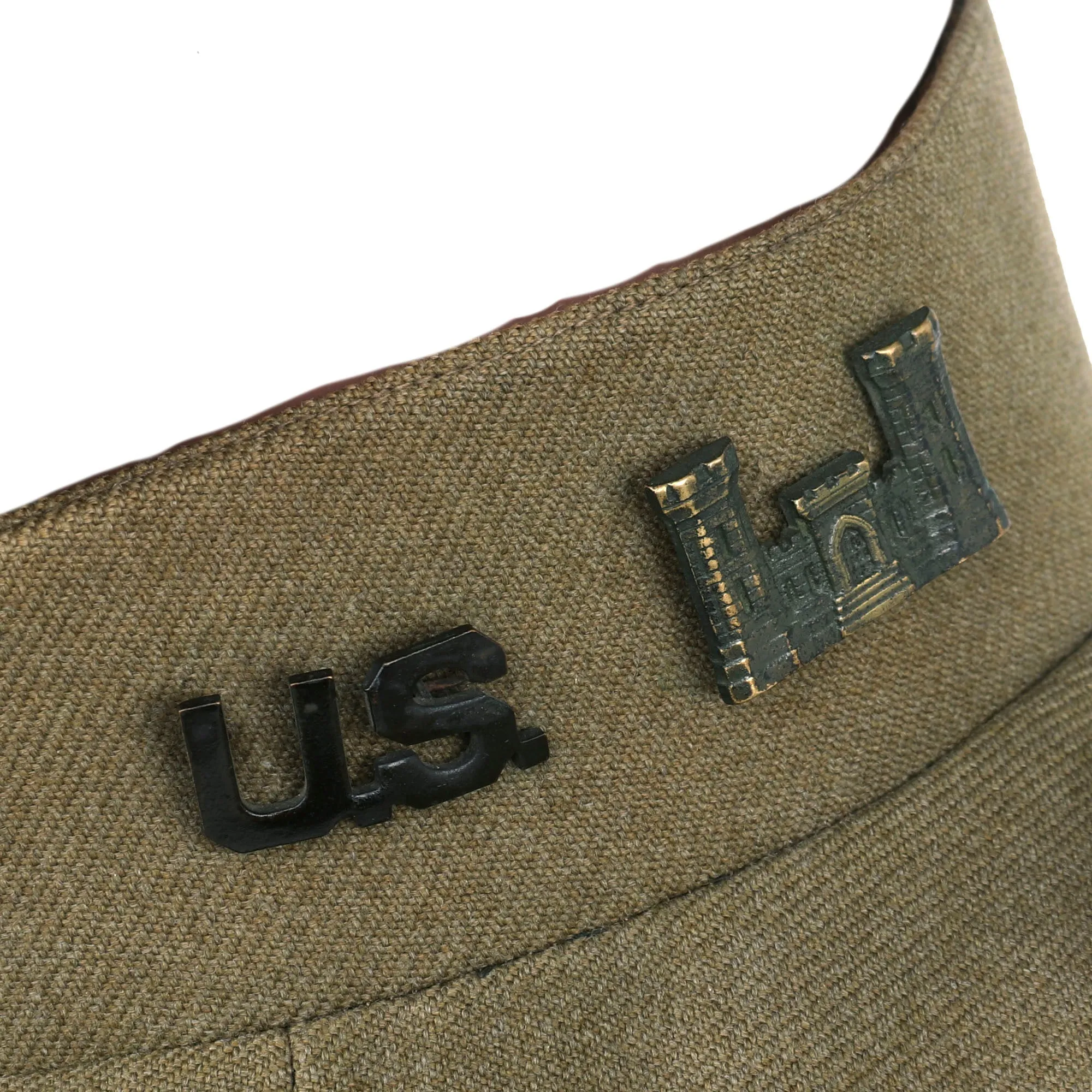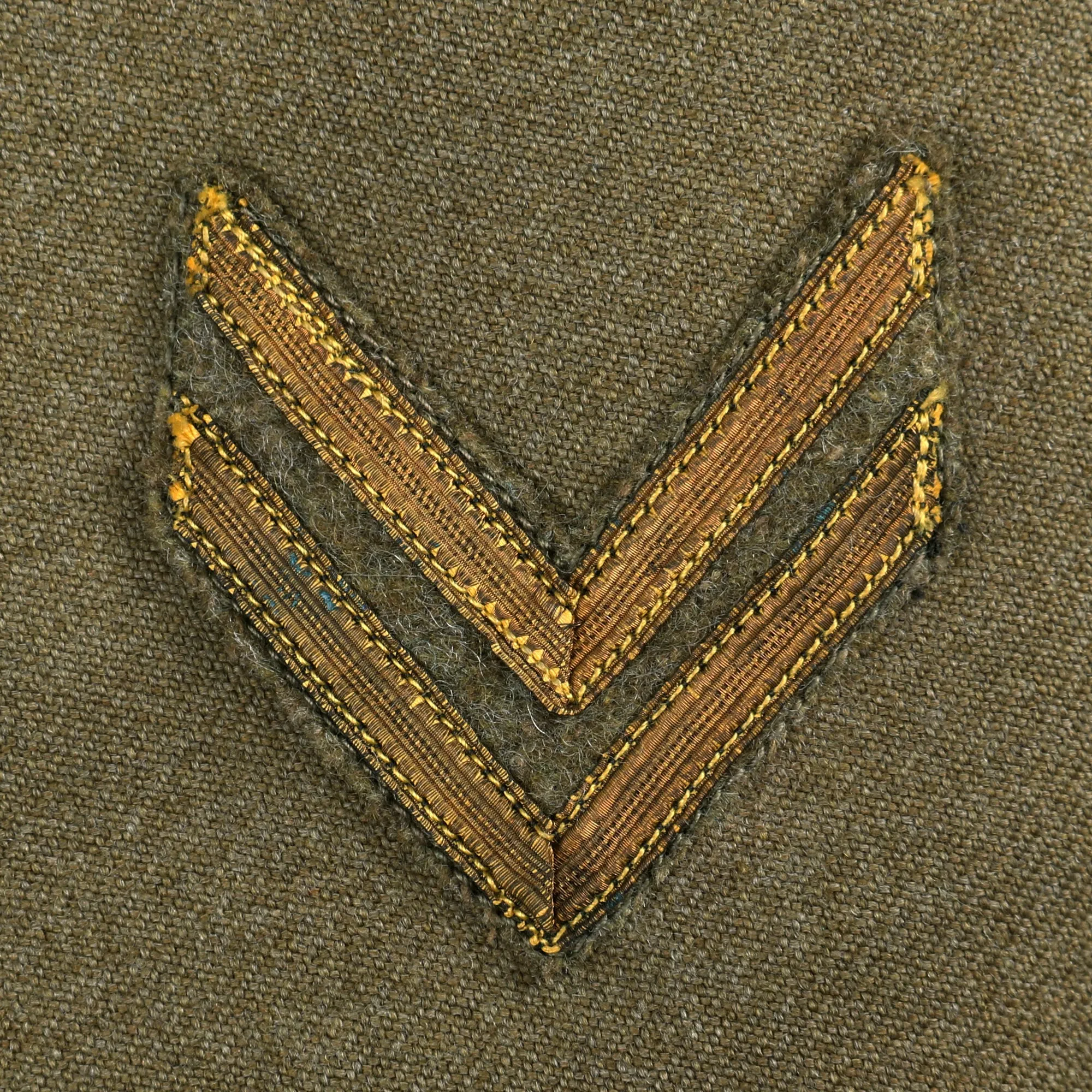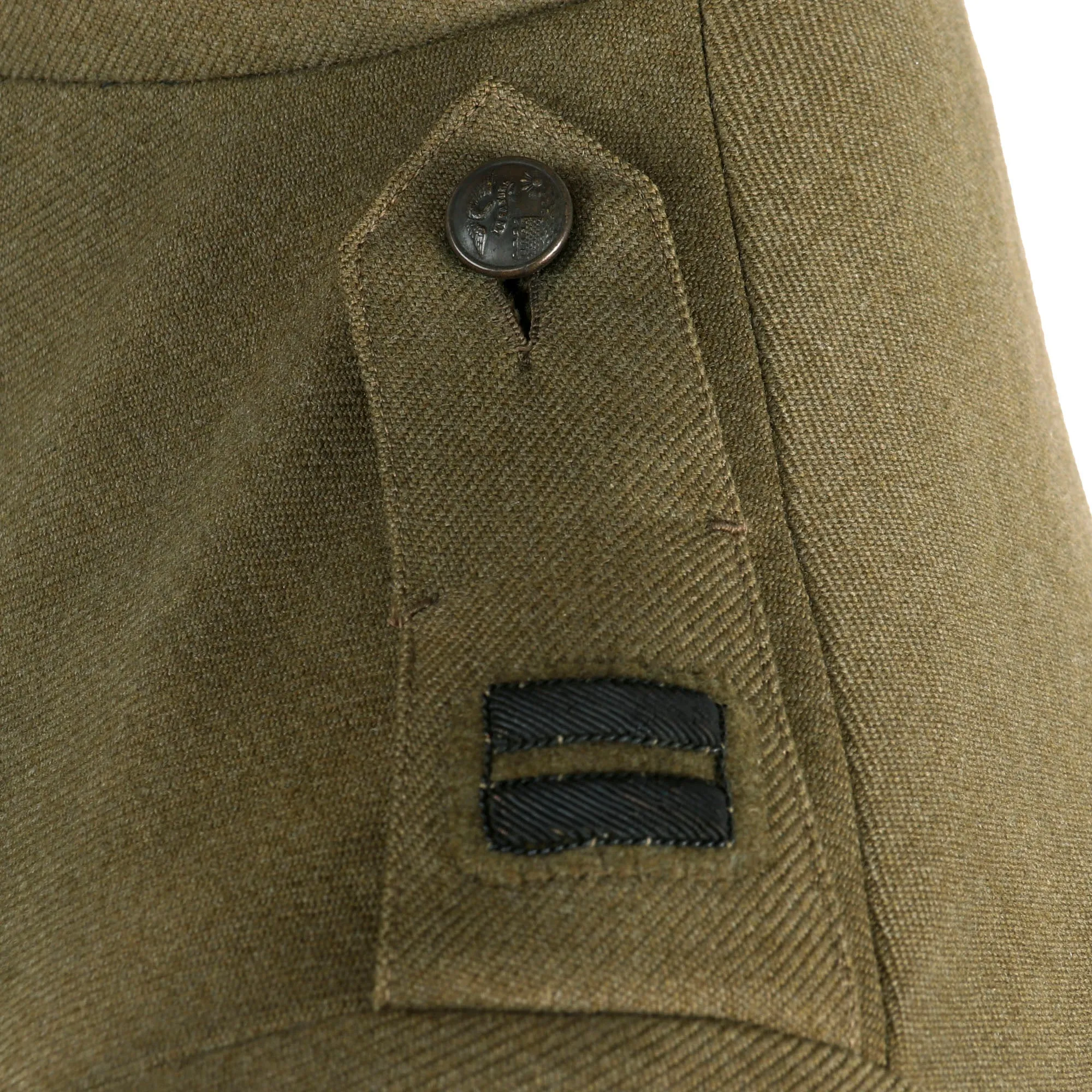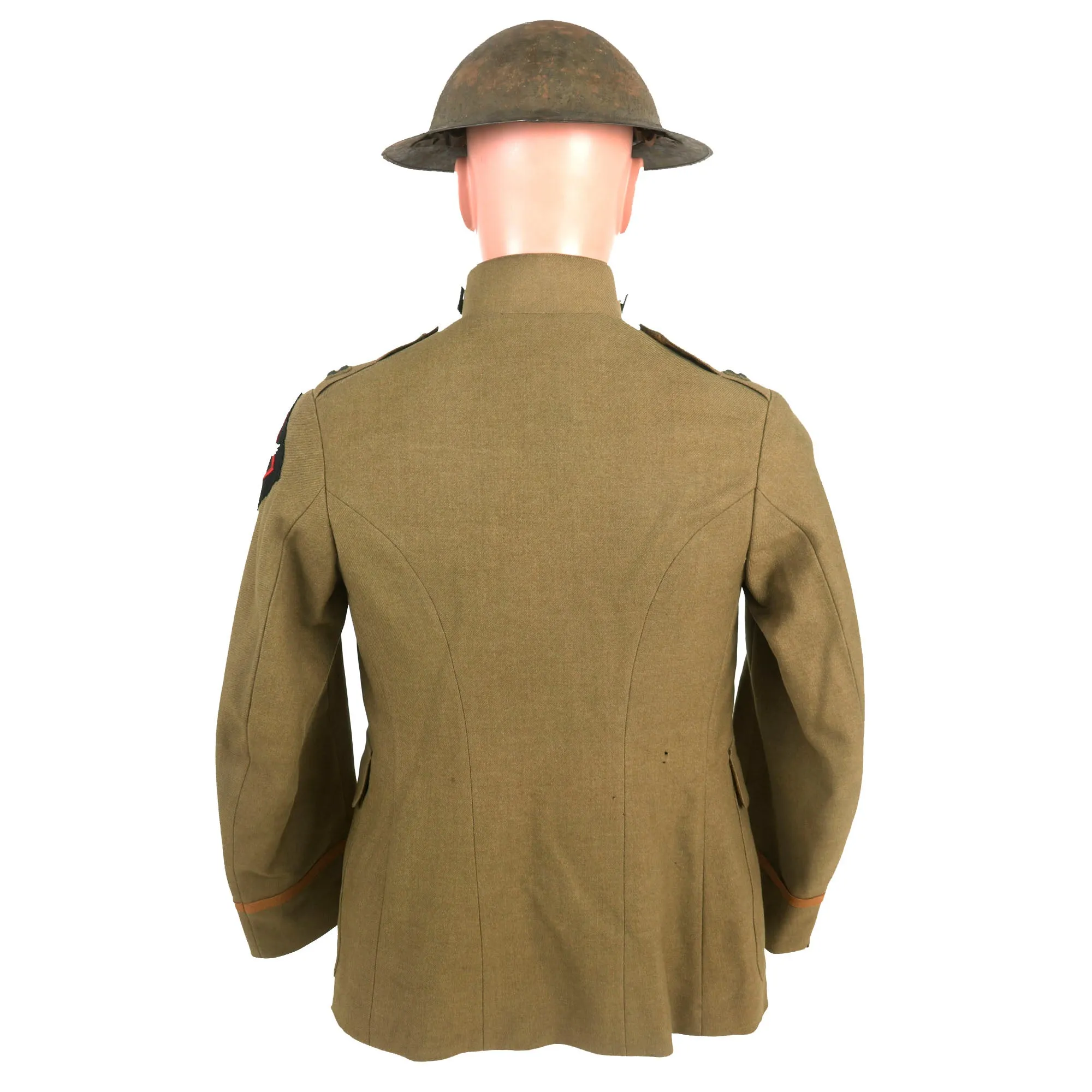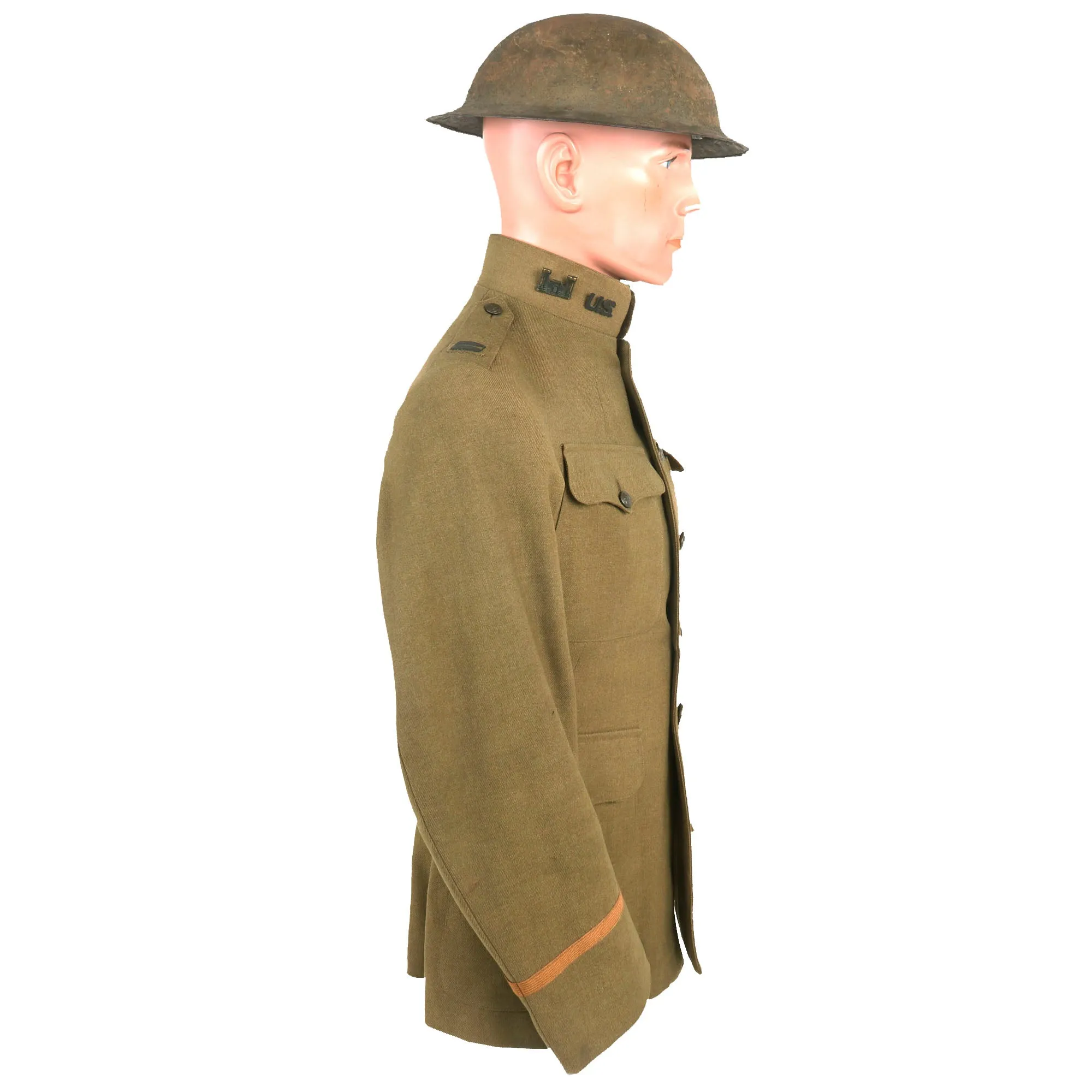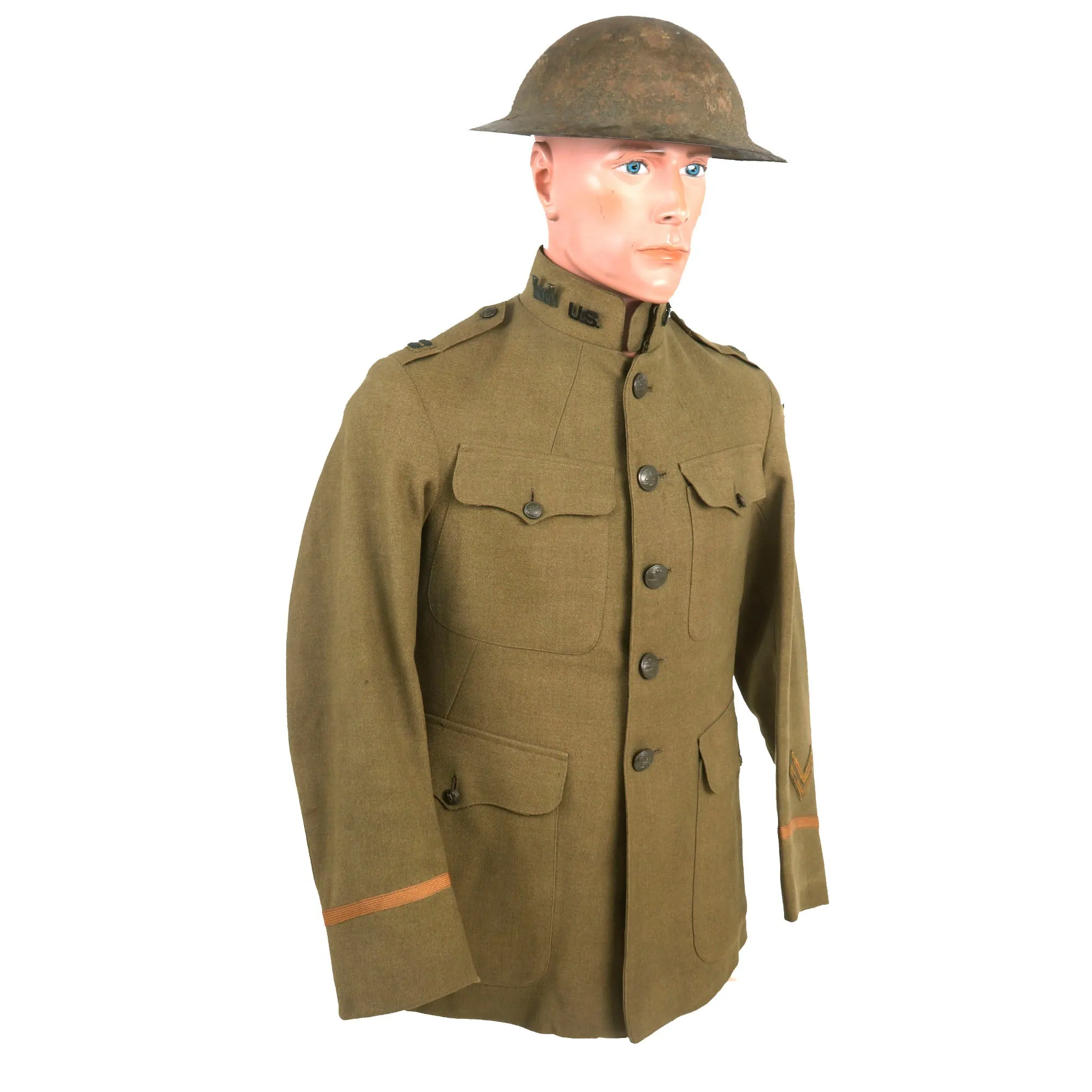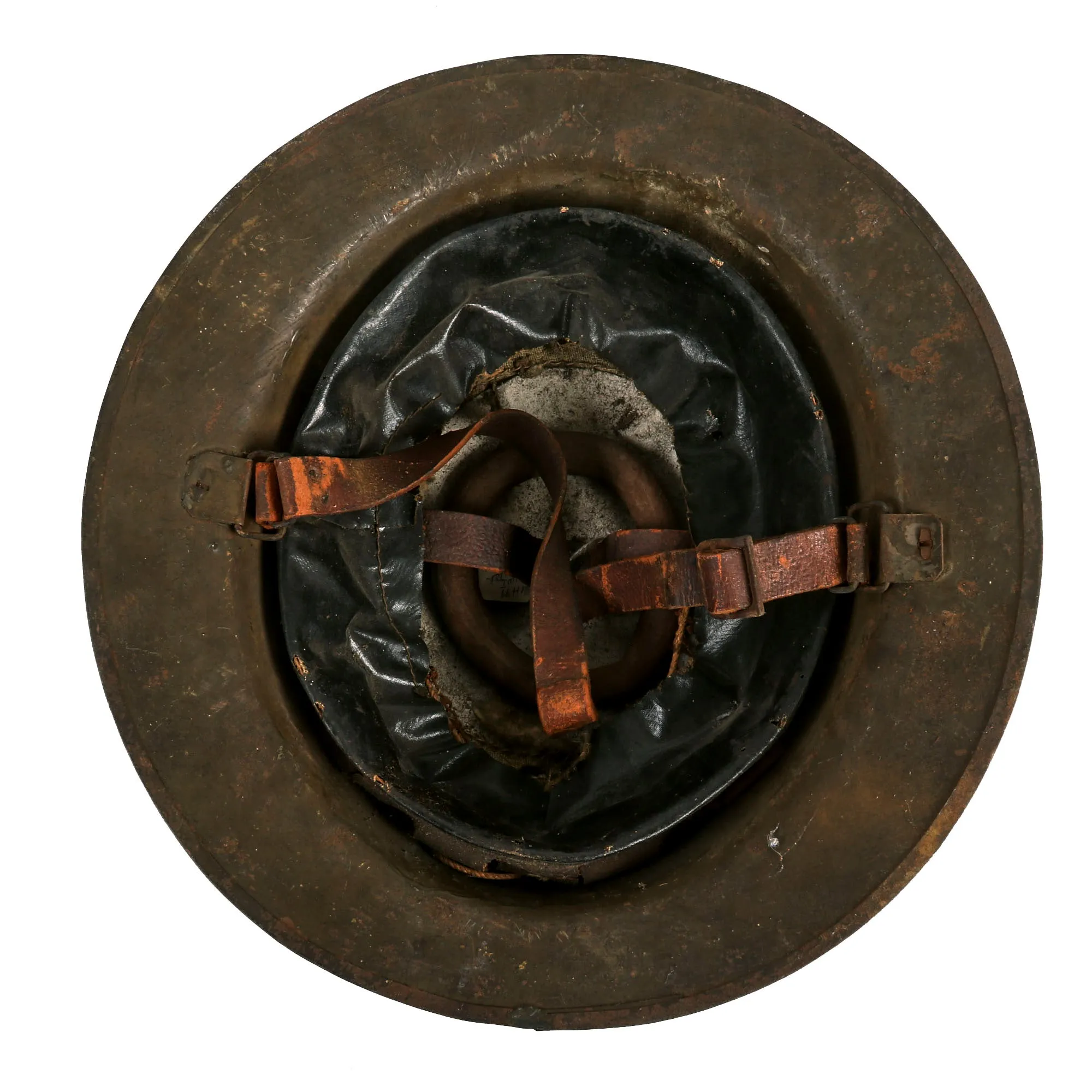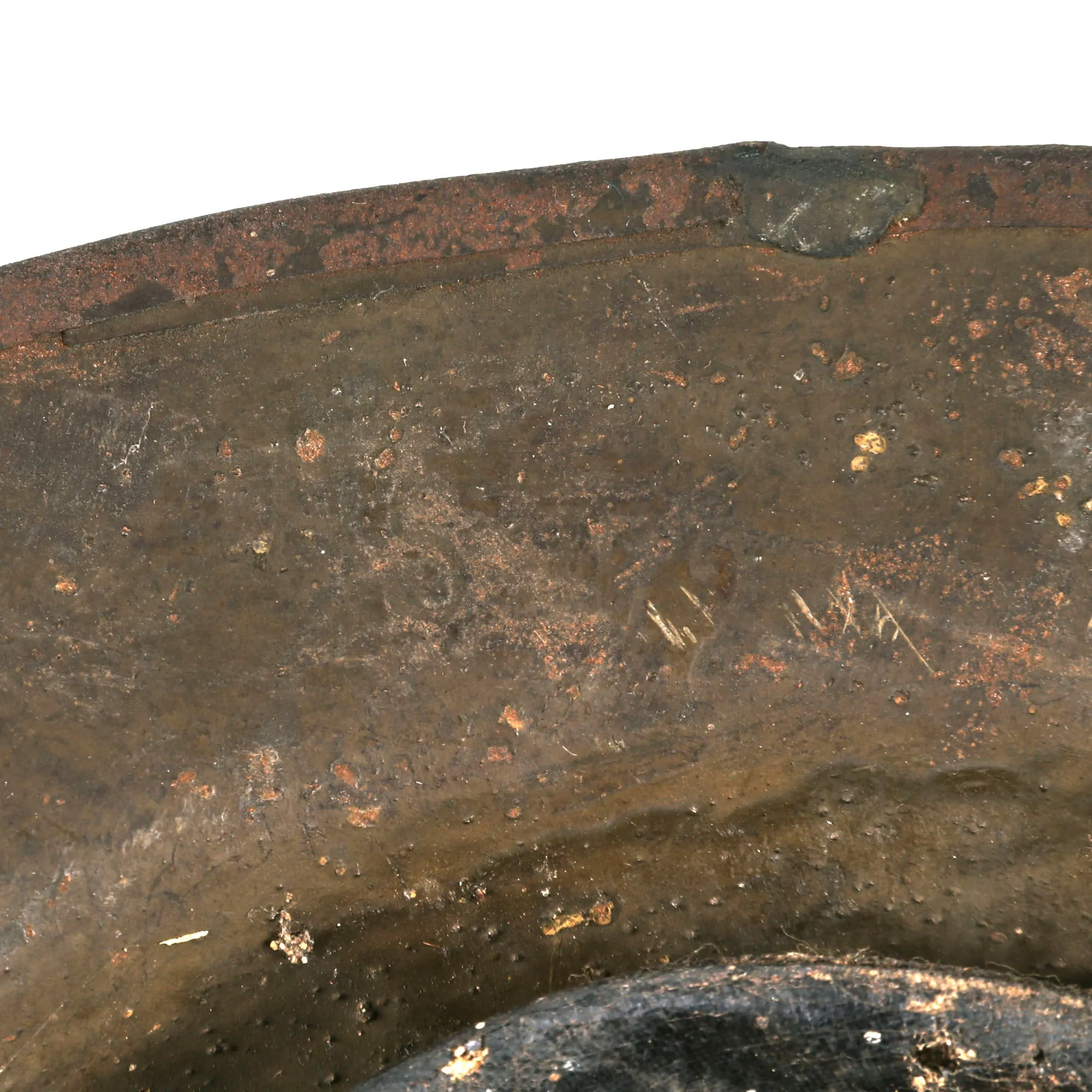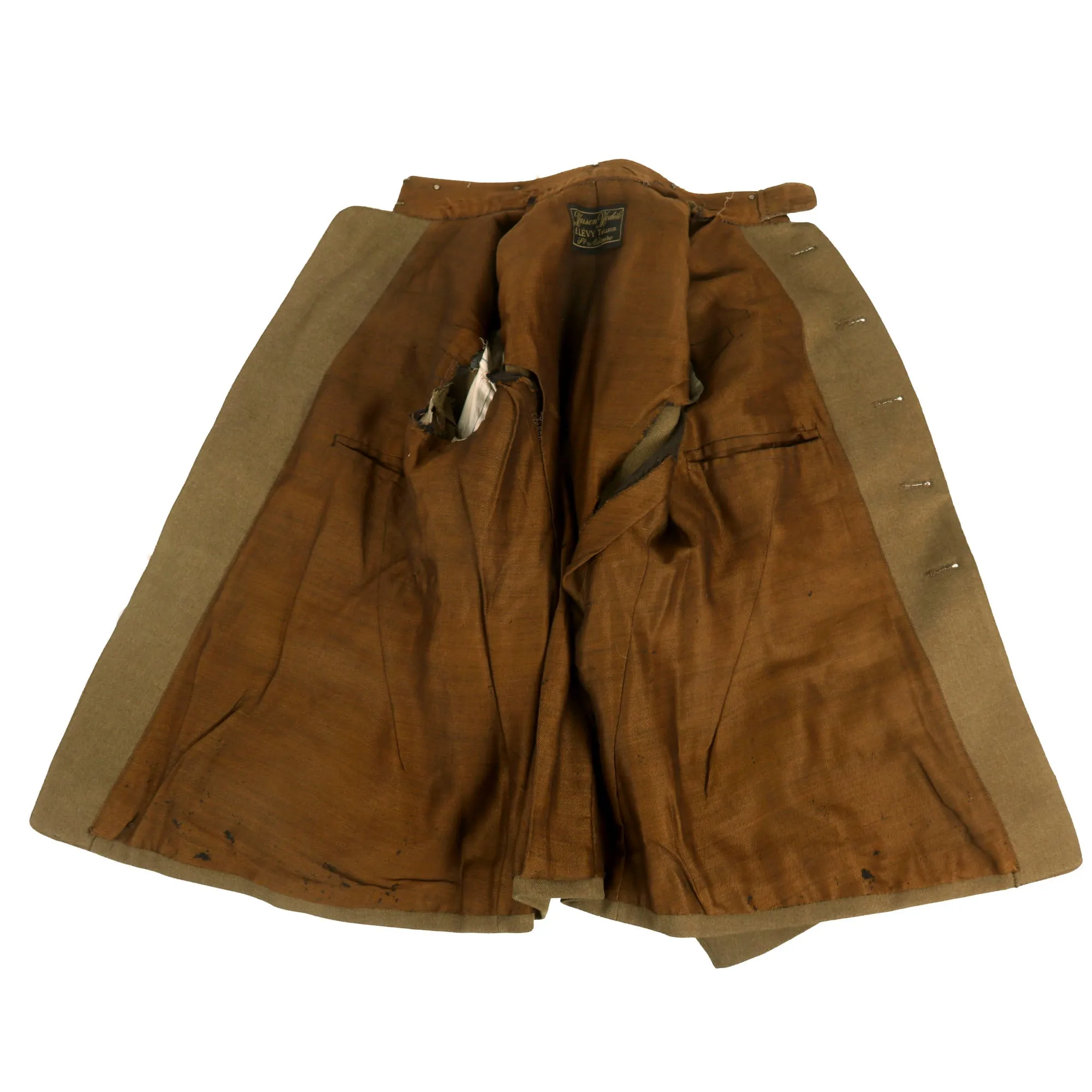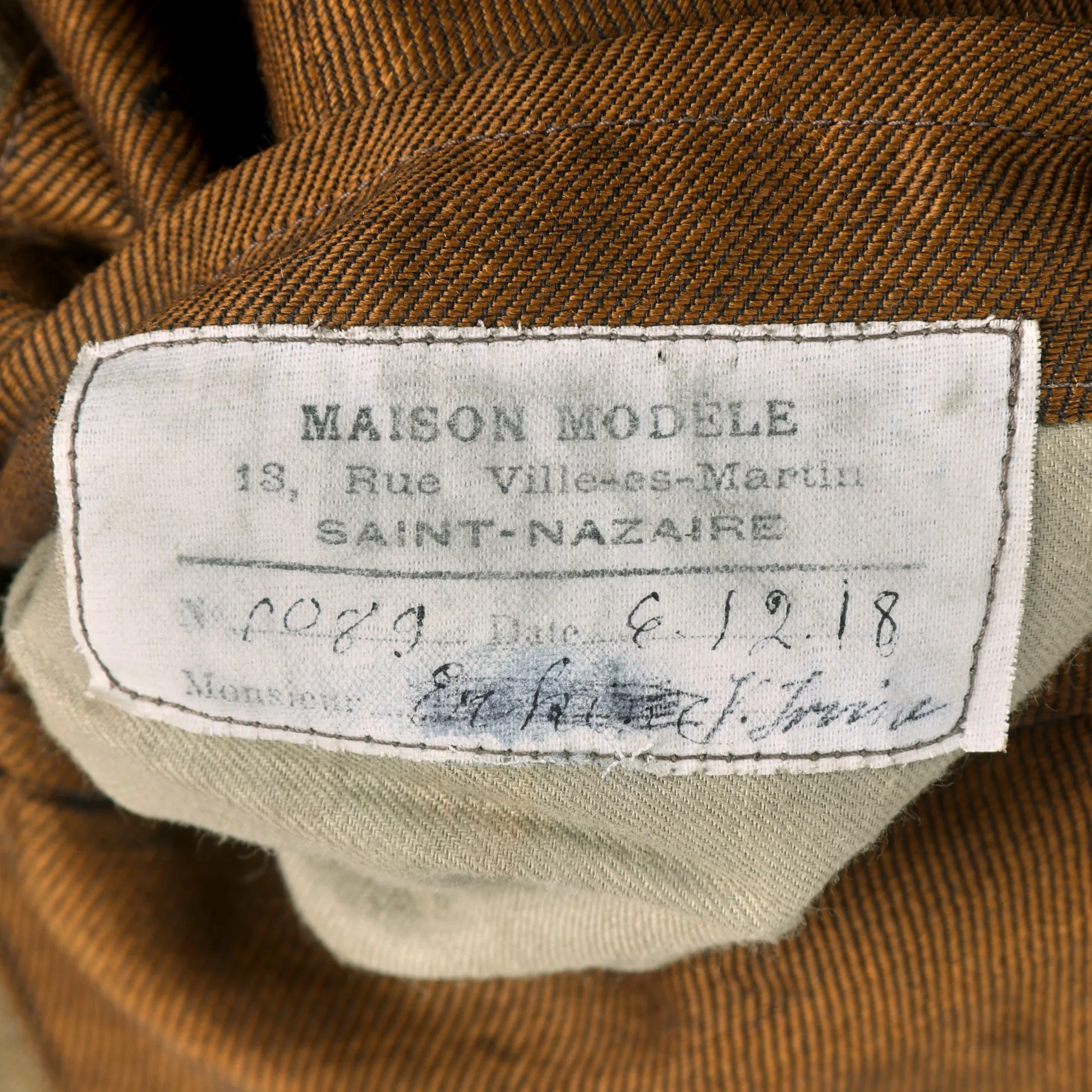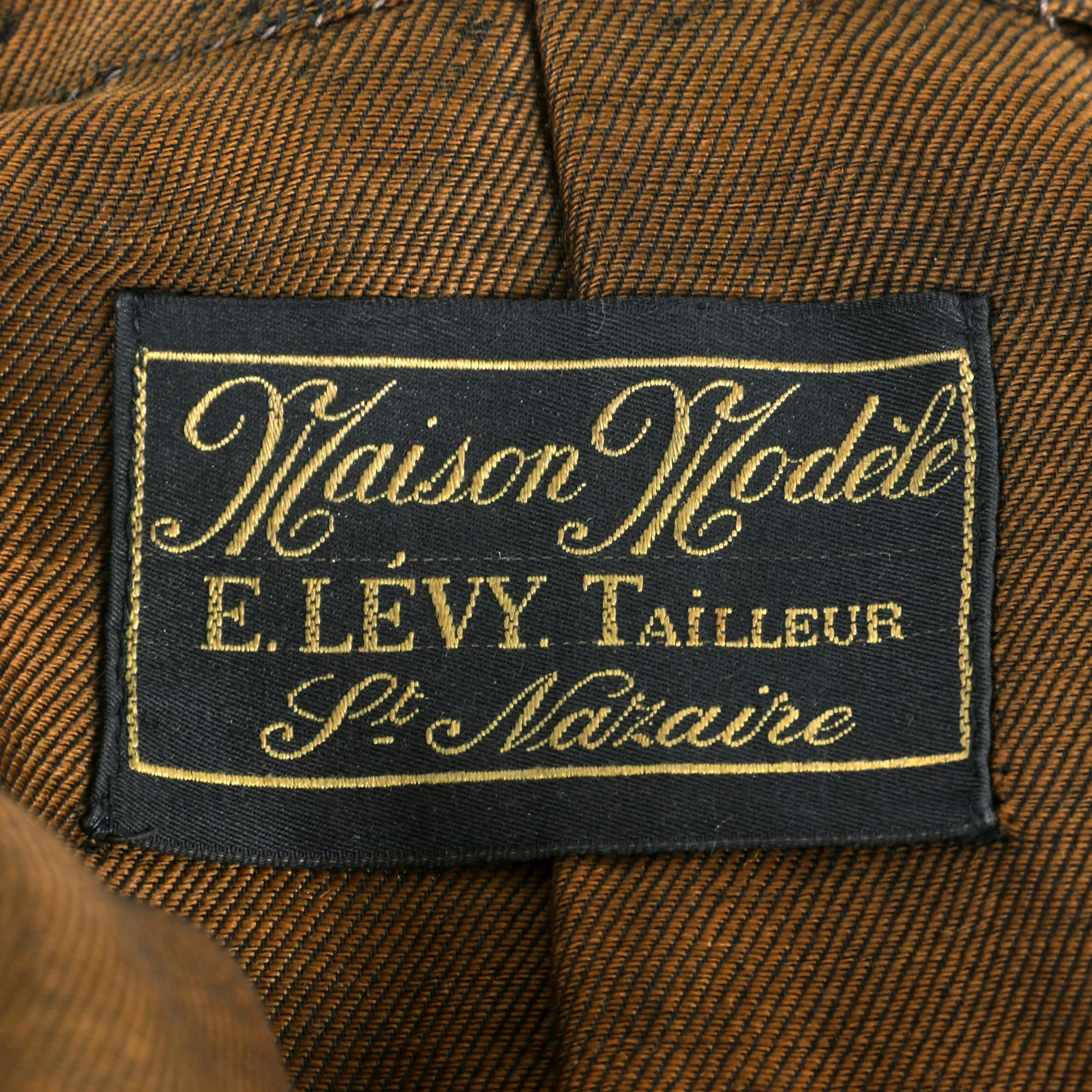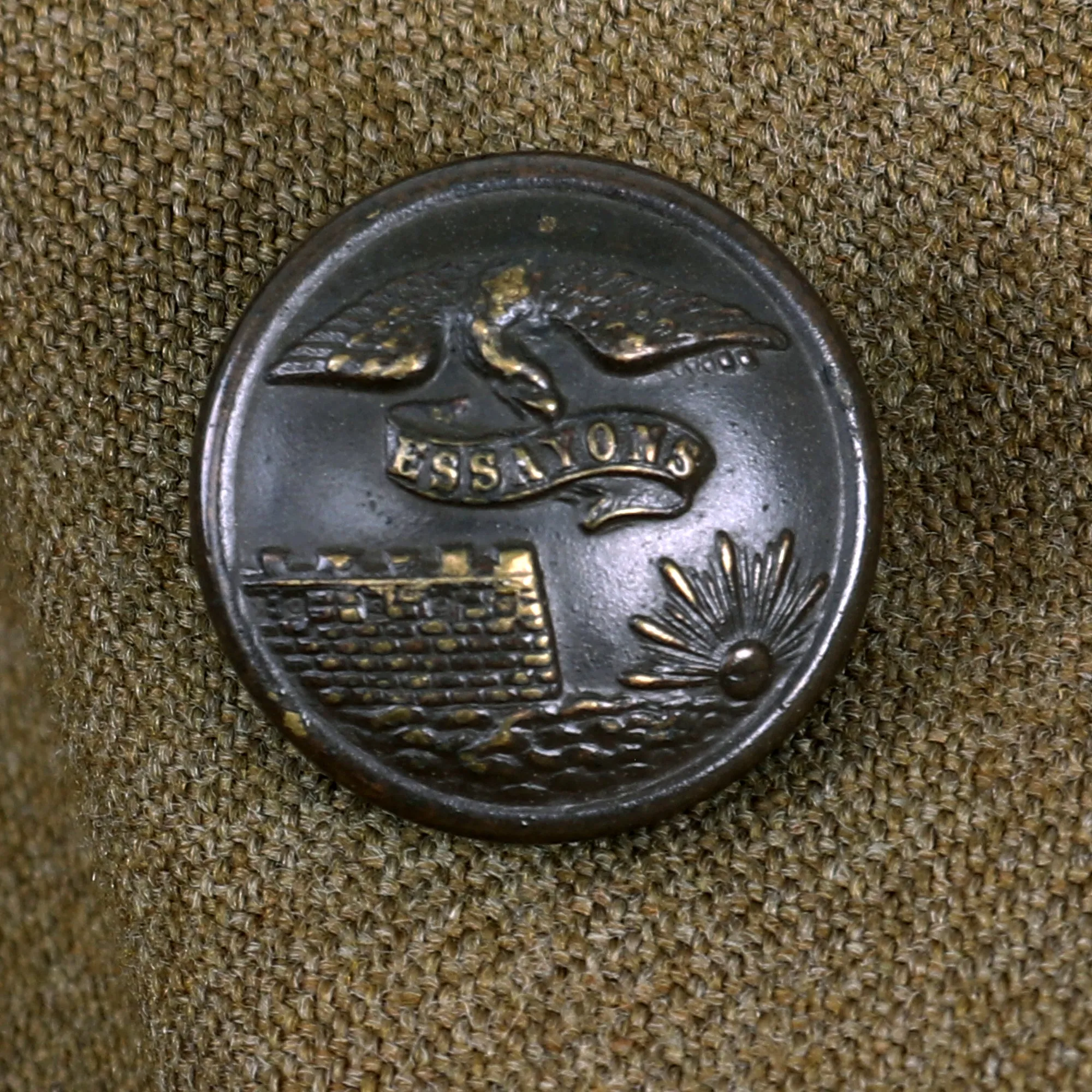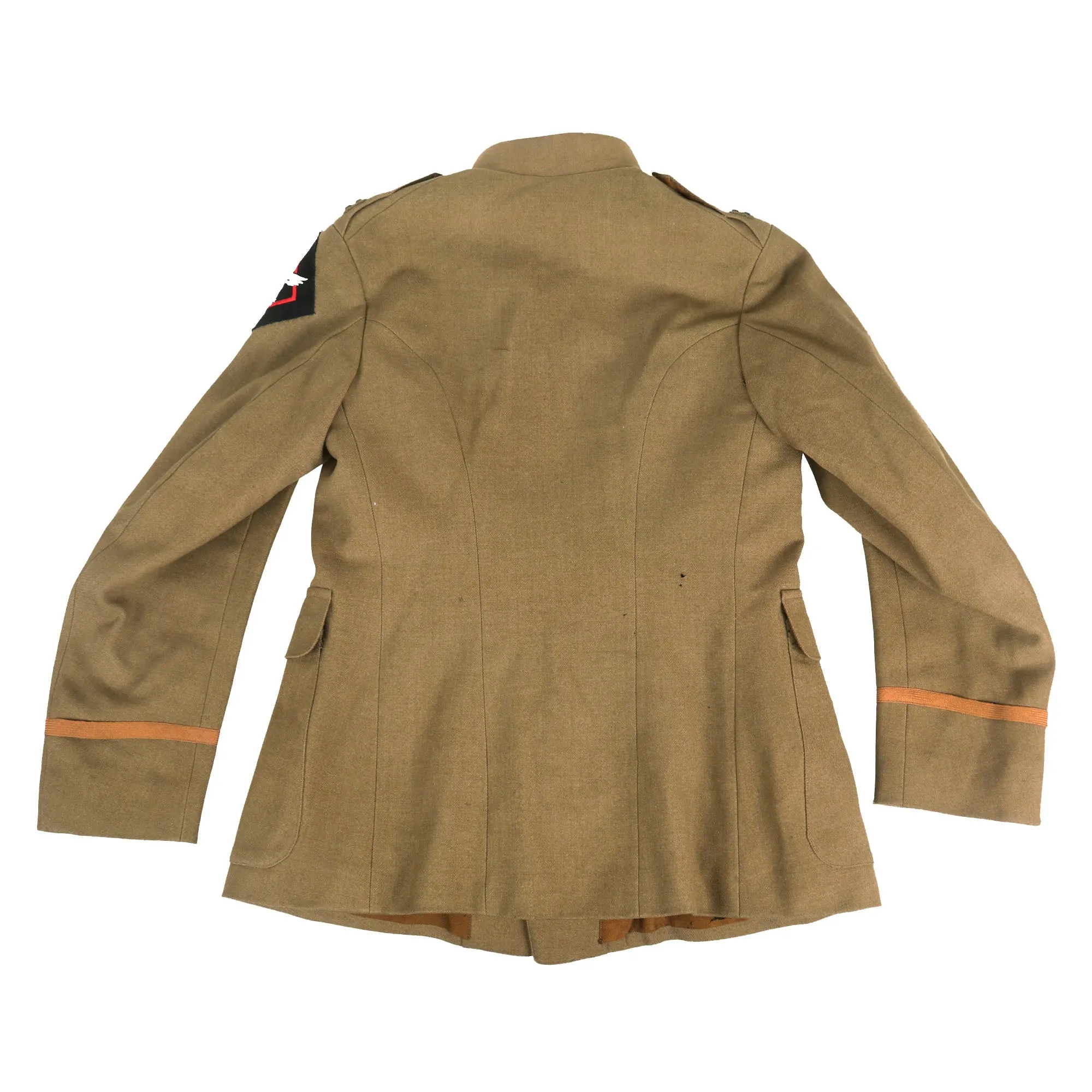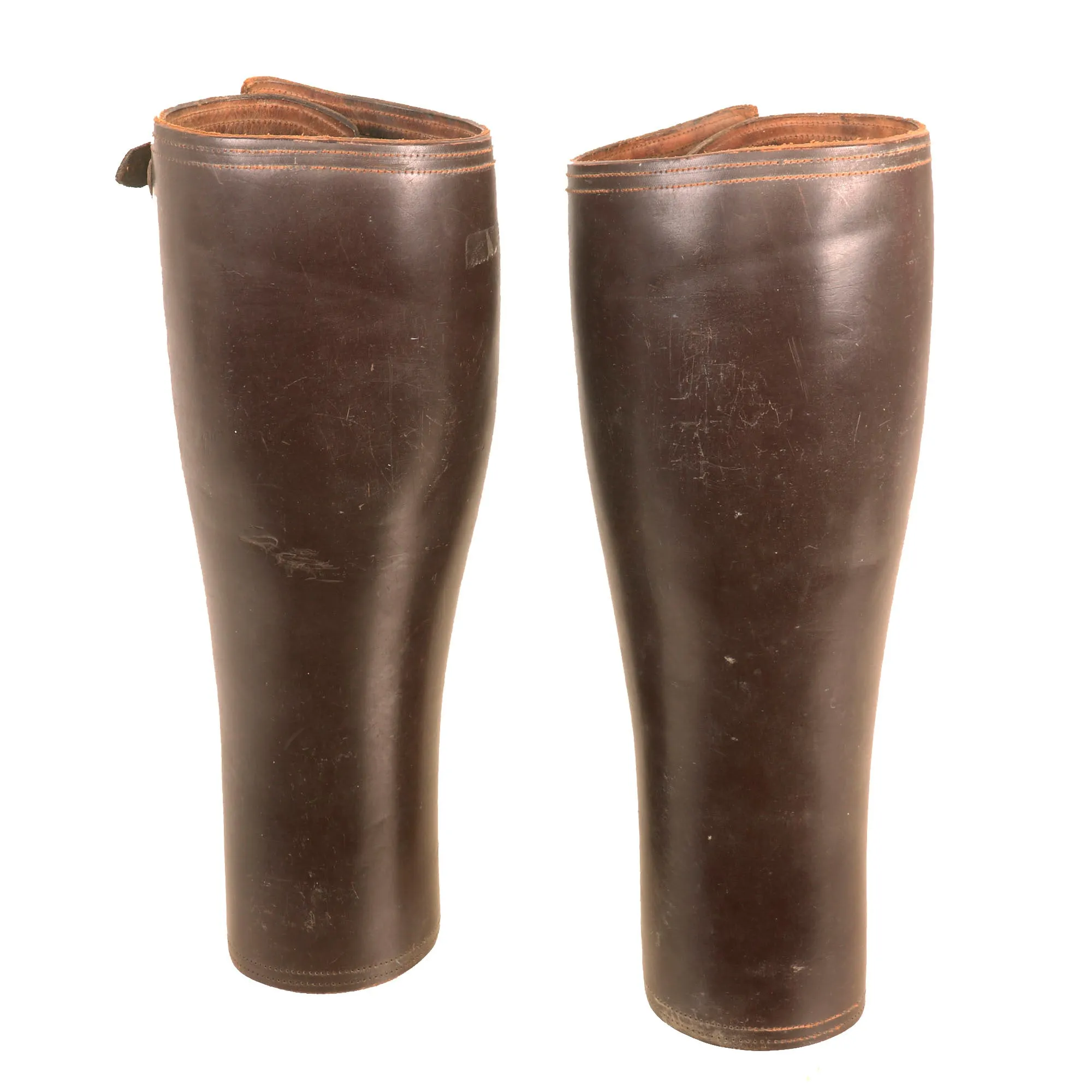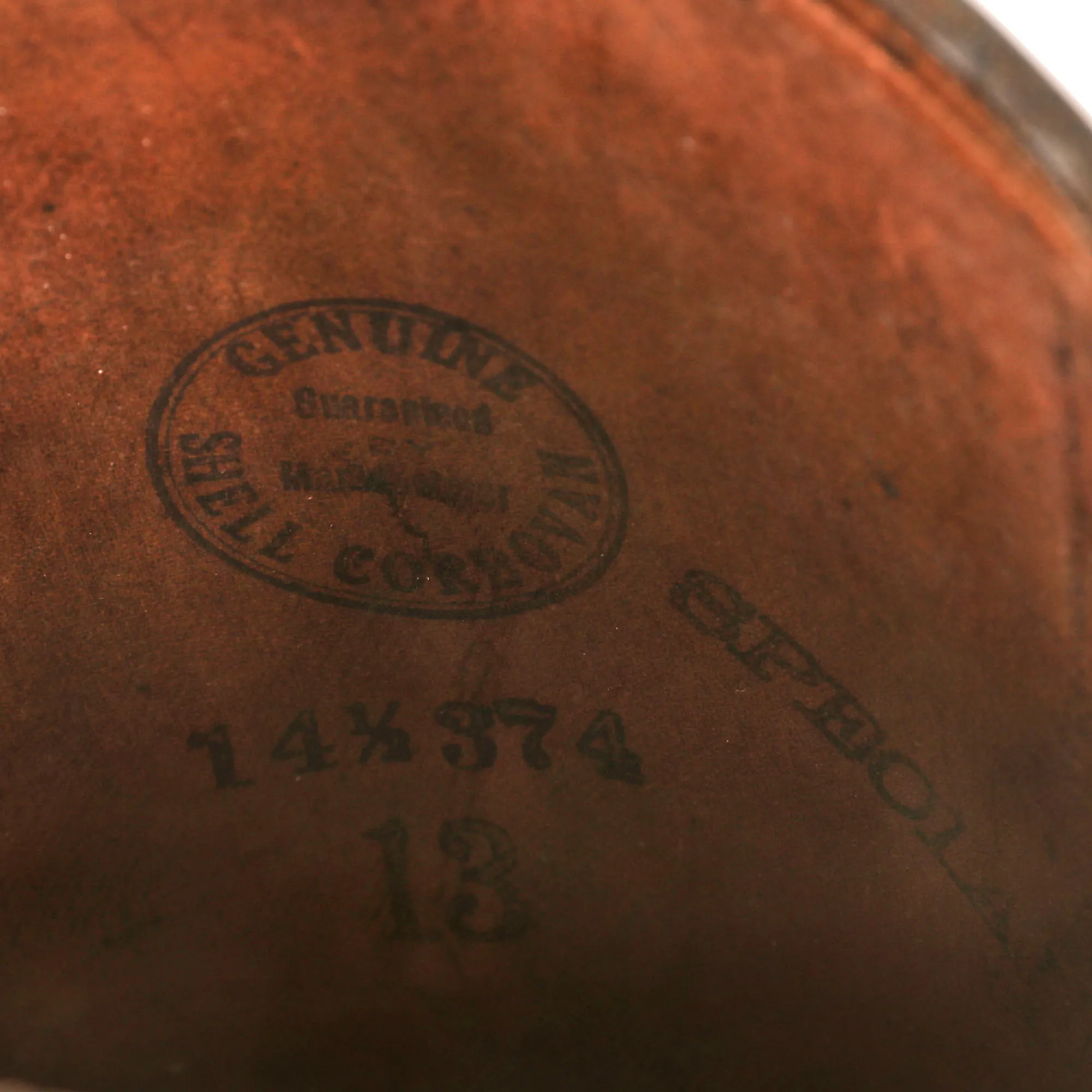Original Item: Only One Available: Did you know that the first American soldiers to see combat in World War I were railway engineers? This phenomenal officer’s grouping belonged to a Captain of the 14th (Light Railway) Engineers, which first saw combat two months before the 1st Division, in the Arras-Bapume defensive sector, on August 21st, 1917.
This is the uniform & helmet grouping of Captain Vivian Rose Irvine, Company A, 14th Engineer Regiment (Light Railway). The uniform is a gorgeous French-tailored private purchase officer’s uniform made in St. Nazaire, with an issue date of June 12th, 1918. The uniform has bullion Captain’s insignia stitched onto the shoulders. The uniform also has the very rare engineer officer’s buttons as opposed to traditional US buttons. The patch is the iconic 14th Engineers insignia featuring a train wheel with wings. The helmet is a British-made Brodie with a full liner and chinstrap, albeit very worn! It is unpainted which makes sense considering he left France before they were allowed to do so. Also included are his officer’s leather gaiters, both in great shape.
Captain Vivian Rose Irvine was born on April 4th, 1885, in Dallas, Texas. Irvine became an engineer at a young age, graduating in Engineering from the University of Texas in 1904 at the age of 19. When the US declared war on Germany, Irvine was living in St. Augustine, Florida, and joined the 7th Engineers (Reserve) in Atlanta, Georgia. He went overseas to become a replacement officer in an active engineer regiment on January 31st, 1918. Upon arriving in France he was attached to the 14th Engineers as a Lieutenant. Given the time he was in France, Irvine likely participated in combat operations in the Arras-Bapume Defensive sector, the Somme Defensive, the Aisne-Marne Offensive, the Aisne-Marne Defensive Sector, the Oise-Aisne Offensive, and part of the Meuse-Argonne Offensive. Irvine served roughly eight months with the regiment before being sent back stateside early on October 1st, 1918.
After returning stateside, Irvine practiced as a Civil Engineer for 2 years, until in 1921, he applied for his passport to travel to Columbia, South America, to study their Engineering Works. Irvine spent many years in Columbia before returning home and passing away at St. Paul Hospital in Dallas from a hemorrhage.
The 14th Engineers
After declaration of war between the United States and Germany on April 6, 1917, the United States and Britain conferred to discuss immediate needs. The beleaguered British needed help along the western front with railways, which served as reliable transportation for ammunition, fuel, supplies, and men. On May 8, 1917, Major William P. Wooten and First Lieutenant Layson Atkins of the U.S. Corps of Engineers arrived in Boston to raise and organize the “Fourth Reserve Engineers.” These men were not draftees, but heard the call and enlisted. Among them was my grandfather, William A. Murphy, who was one of 1,168 men to volunteer for service for the 14th. Murphy was at the time working for the Boston and Albany Railroad, which later became the New York Central.
On June 25, 1917 the men of the 14th arrived at Rockingham Park in Salem, NH (about 20-25 minutes north from my home) for training. Dubbed “Camp Rockingham,” the horse race track’s grand stand served to billet the men. There they were organized, drilled in close order marches, and equipped and given uniforms.
On July 25 the men boarded trains for New York and departure across the Atlantic. The transport “Adriatic” left under steam on July 27, 1917. It stopped at Halifax, Novia Scotia to form up with a convoy of three other ships for protection against submarines, and departed on August 1 for the final leg of its journey. The Adriatic and the 14th Engineers arrived in Liverpool harbor, England on August 11.
The reception in England was tremendous. The 14th was paraded through the streets of London past Buckingham Palace to wild applause, mainly from crowds of women. The men of course were at the Front. Bands broke out in the “Star Spangled Banner.” They marched past the palace where the King, Queen, Prime Minister and other dignitaries acknowledged the salutes of the marching soldiers. A week later on August 18 they crossed the English Channel into France.
The 14th was billeted in an English camp, St. Martin’s Camp, with 14 men each to the British conical tents. They were given instructions in quickly donning gas masks. Soon they were put to work on the light, narrow gauge railways used by the British soldiers. Their first stop was Arras, “a dead city battered by shells.” It was a sobering look at the face of war.
The 14th had a long record of service, about two years (May 1917-May 1919) during which they worked long days and nights making deliveries of rations, water, and ammunition. Often their return cargo was wounded men from the front. They were continually repairing breaks in the line caused by shelling and building new railways as ground was taken and lost.




